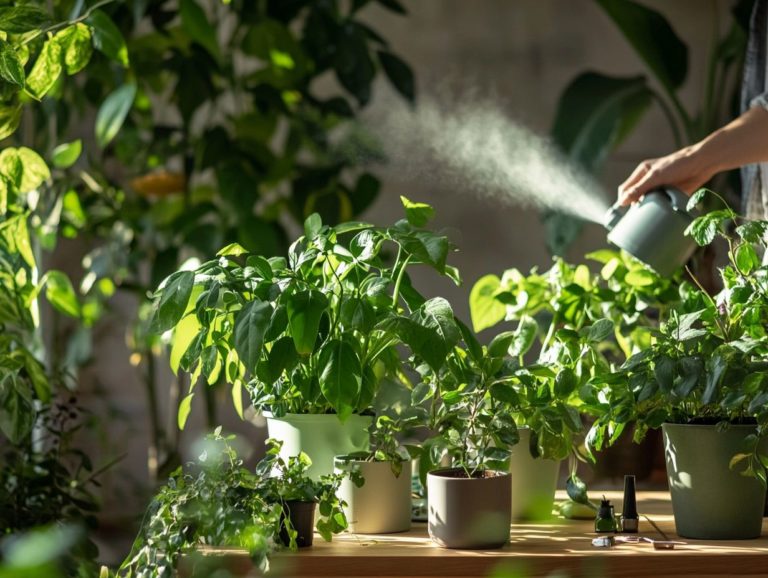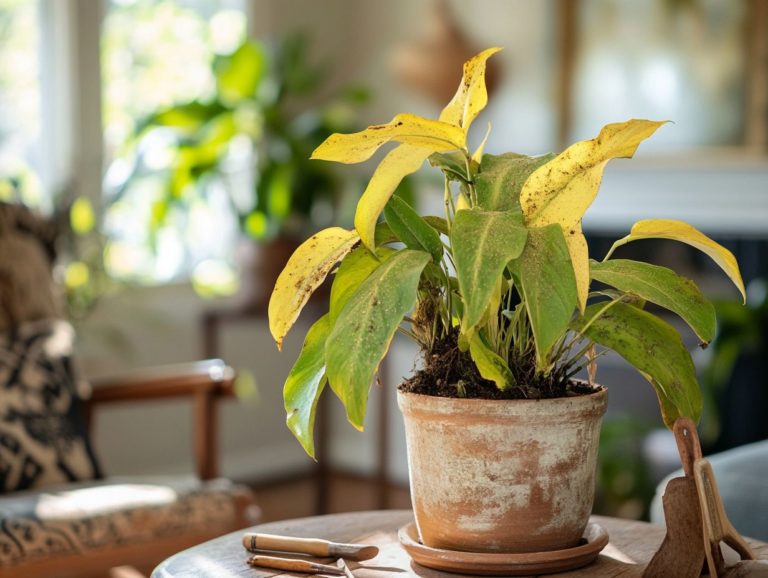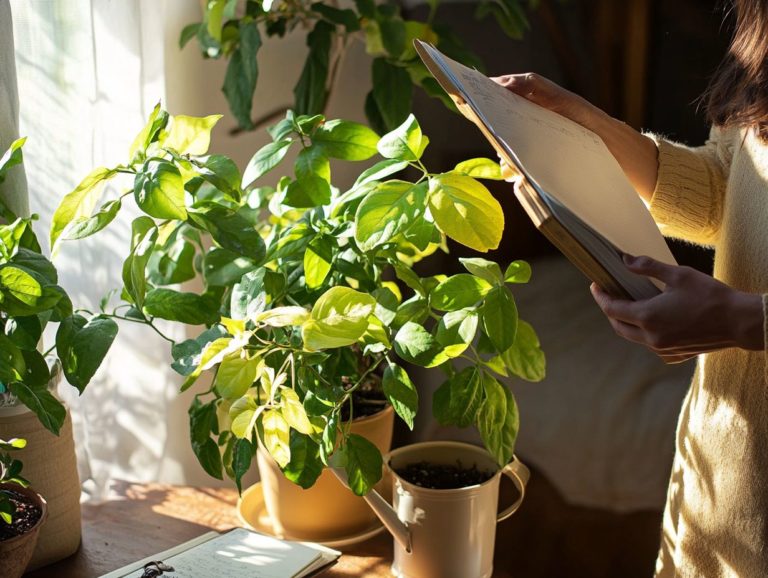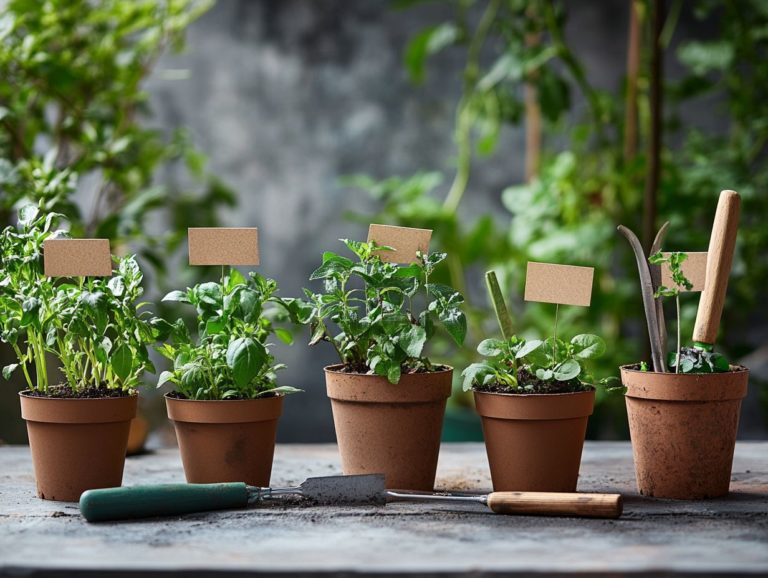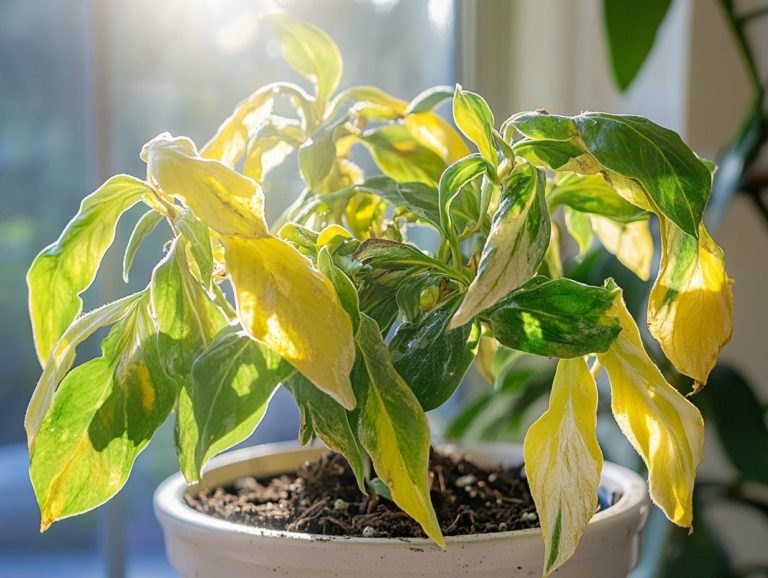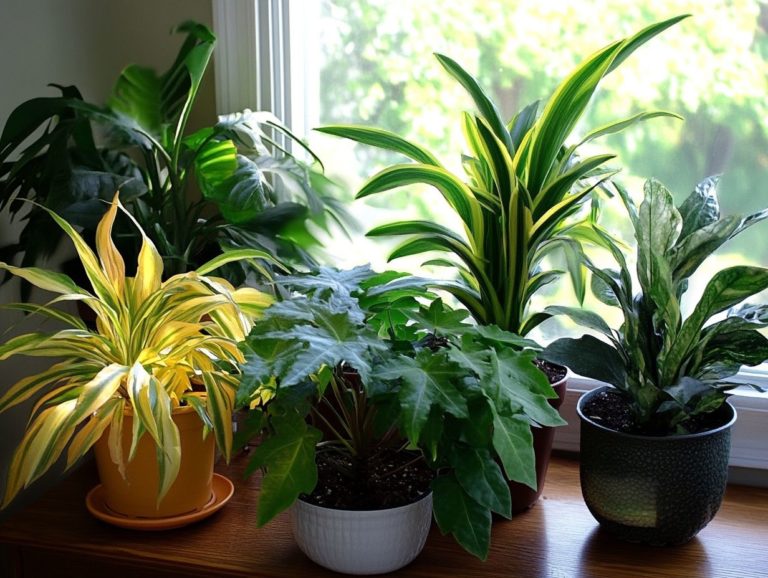How to Manage Indoor Plant Pests Naturally
Indoor plants can transform your home into a vibrant oasis, but they might also draw in pesky intruders that can jeopardize their well-being.
Knowing the common types of pests is essential for plant lovers. Understanding their effects can help protect your plants. This article covers natural pest management strategies. You ll learn about preventive measures, non-toxic solutions, and how to spot an infestation.
You ll find organic remedies and maintenance tips designed to keep your plants flourishing and free from pests.
Discover the secrets to thriving plants and effective pest control today!
Contents
- Key Takeaways:
- Natural Pest Management Methods
- Identifying and Diagnosing Pests
- Organic Remedies for Indoor Plant Pests
- Preventing Future Infestations
- Frequently Asked Questions
- What are common indoor plant pests and why should I manage them naturally?
- What are some natural methods for managing indoor plant pests?
- How can I prevent indoor plant pests from infesting my plants?
- Are there any household items that can help manage indoor plant pests?
- What are the benefits of using natural methods for managing indoor plant pests?
- What should I do if my indoor plants are already infested with pests?
Key Takeaways:
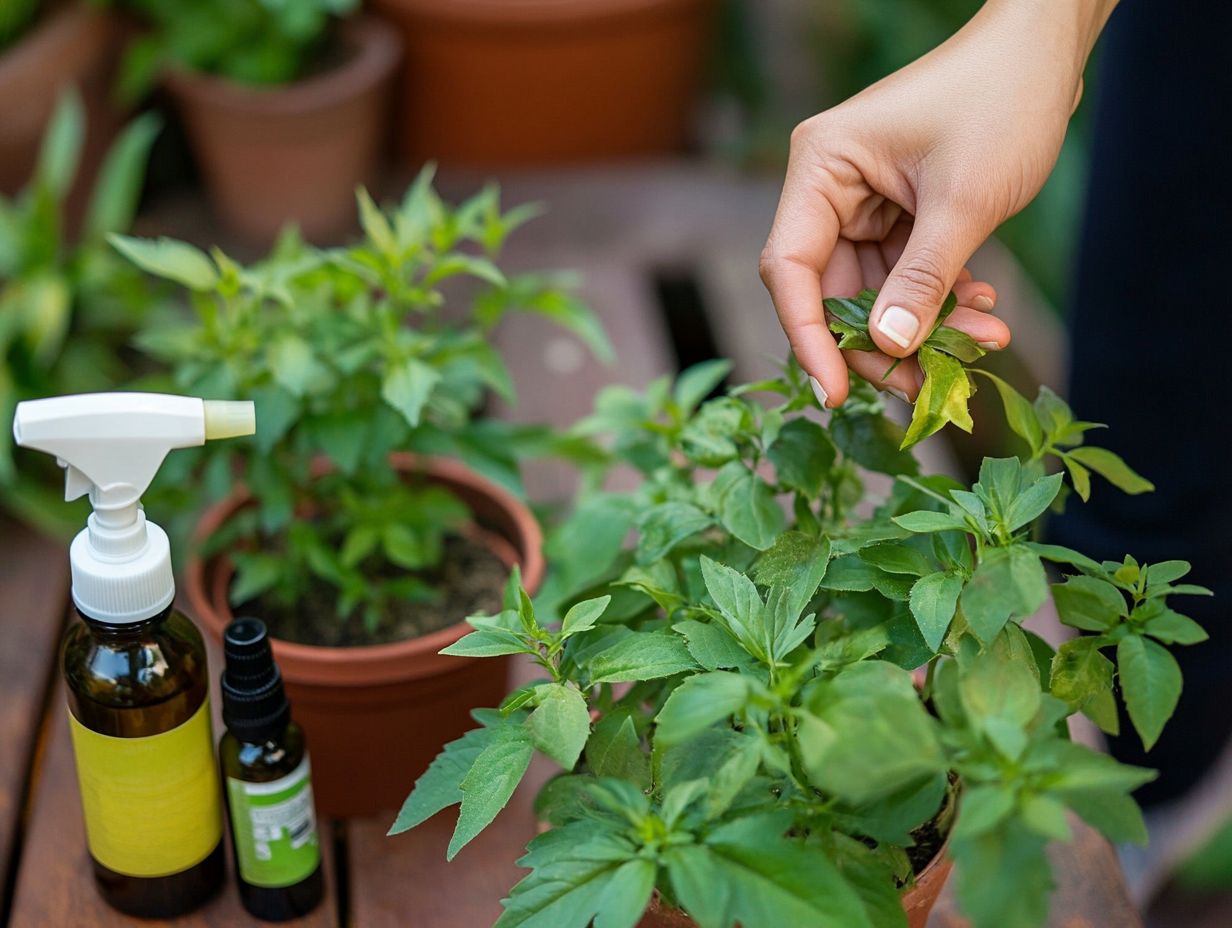
- Regularly inspect your indoor plants for signs of pests and take immediate action to prevent infestations.
- Control moisture levels to avoid creating damp environments that attract pests.
- Quarantine new plants for at least two weeks to ensure they are pest-free.
- Use natural pest management methods, such as homemade repellents and traps, to protect your plants from harmful chemicals.
- Maintain proper plant care and hygiene practices to keep your indoor plants healthy.
Common Types of Pests and Their Impact
Common pests such as aphids, spider mites, and fungus gnats can take a significant toll on the health of your indoor plants, leading to problems like stunted growth, yellowing leaves, and even the untimely demise of your beloved greenery. Understanding these pests and their effects is vital for maintaining a flourishing indoor garden.
Act fast! These pests can quickly disrupt your plants’ health, diminishing their ability to photosynthesize effectively, which means they turn sunlight into energy. As Tom Hilston from the National Greenhouse emphasizes, early detection of infestations is crucial for preserving the integrity of your indoor plants.
Symptoms like webbing on leaves from spider mites or the sticky residue left by aphids are clear signals that immediate action is required. A thorough inspection of the soil and foliage can unveil fungus gnats, which thrive in overly moist conditions.
If you delay your response, these pests can inflict irreversible damage, jeopardizing not just individual plants but the overall vitality of your indoor garden.
Natural Pest Management Methods
Natural pest management methods are becoming increasingly popular for indoor gardeners like yourself who want effective ways to protect their plants while prioritizing environmental safety and health.
You might find that these methods often utilize organic solutions such as neem oil, diatomaceous earth, and even simple household items like hydrogen peroxide.
Preventive Measures
Preventive measures are crucial for maintaining the health and vitality of your indoor plants, as they help mitigate the risk of pest infestations before they can take hold. By implementing strategies such as moisture control, quarantining plants, and employing early detection techniques, you can significantly reduce pest-related issues.
Take moisture control, for example. Not only does it nourish your plants, but it also prevents the damp environments that pests love to call home. Regularly checking the soil’s moisture level ensures your plants are neither overly dry nor waterlogged, both of which can attract unwanted critters.
Quarantining new arrivals for at least two weeks is another wise move. This practice allows you to inspect new plants without jeopardizing the health of your existing ones, fostering a pest-free environment by catching potential issues early.
Using sticky traps and inspecting plants regularly strengthens your defenses. This helps keep your plants healthy and your indoor garden thriving.
Start taking care of your indoor garden today! Your plants will thank you.
Non-toxic Pest Control Solutions
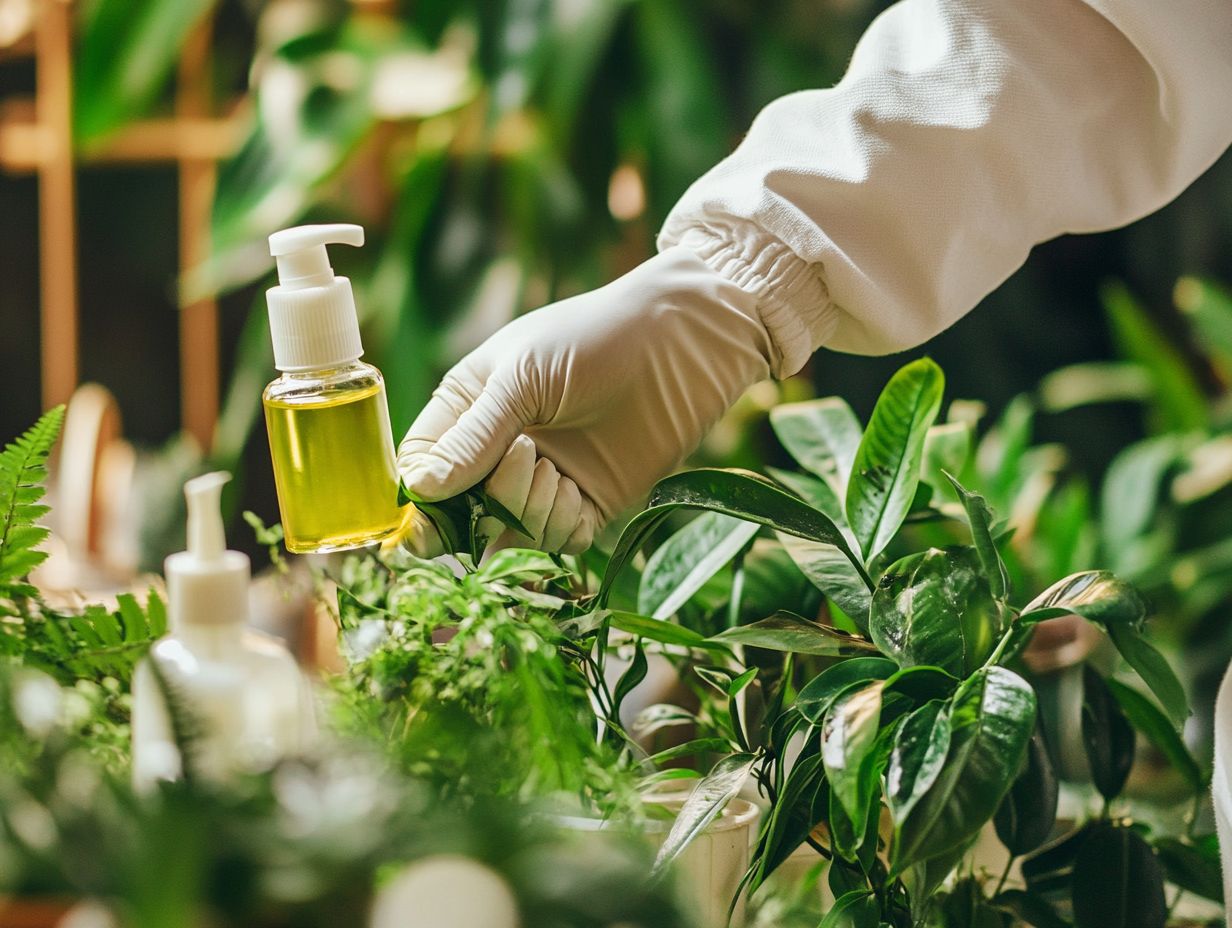
Non-toxic pest control solutions offer safe and effective ways to manage indoor pests. You can do this without harming your plants or the environment.
By using organic solutions and household ingredients, you can create your own insecticides and repellents to combat pests like aphids and spider mites. For effective options, consider exploring the top 5 natural remedies for houseplant pests. These methods protect the ecosystem and promote a healthier living environment, especially in homes with pets and children.
Everyday kitchen staples, such as vinegar, baking soda, and essential oils, become powerful allies in this mission. A mixture of vinegar and water can send ants packing, while peppermint oil works wonders as a repellent against various insects.
Implementing these organic strategies ensures a balanced approach to pest management. This allows you to cultivate resilience in your plants and maintain a vibrant garden all without resorting to toxic chemicals.
Identifying and Diagnosing Pests
Identifying pests quickly is crucial for keeping your plants healthy. Look for signs like discolored leaves, visible pests, and webbing, especially linked to spider mites and other intruders.
If you notice yellow spots or holes in the foliage, it might signal the presence of aphids or caterpillars. A sticky residue known as honeydew often points to a mealybug or scale issue. Also, observe your plants’ growth habits; stunted growth may suggest an underlying pest problem.
Regularly checking the undersides of leaves helps uncover hidden invaders, making vigilance essential for proactive pest management. Early detection aids in salvaging affected plants and prevents widespread infestations, ensuring a thriving, healthy garden environment.
Organic Remedies for Indoor Plant Pests
Organic remedies for indoor plant pests provide a refined and effective approach to managing these pesky issues without harsh chemicals. By incorporating ingredients like cinnamon and neem oil, you can achieve remarkable results in pest treatment and prevention.
Embracing these natural solutions not only safeguards your plants but also elevates your gardening experience.
Homemade Pest Repellents and Traps
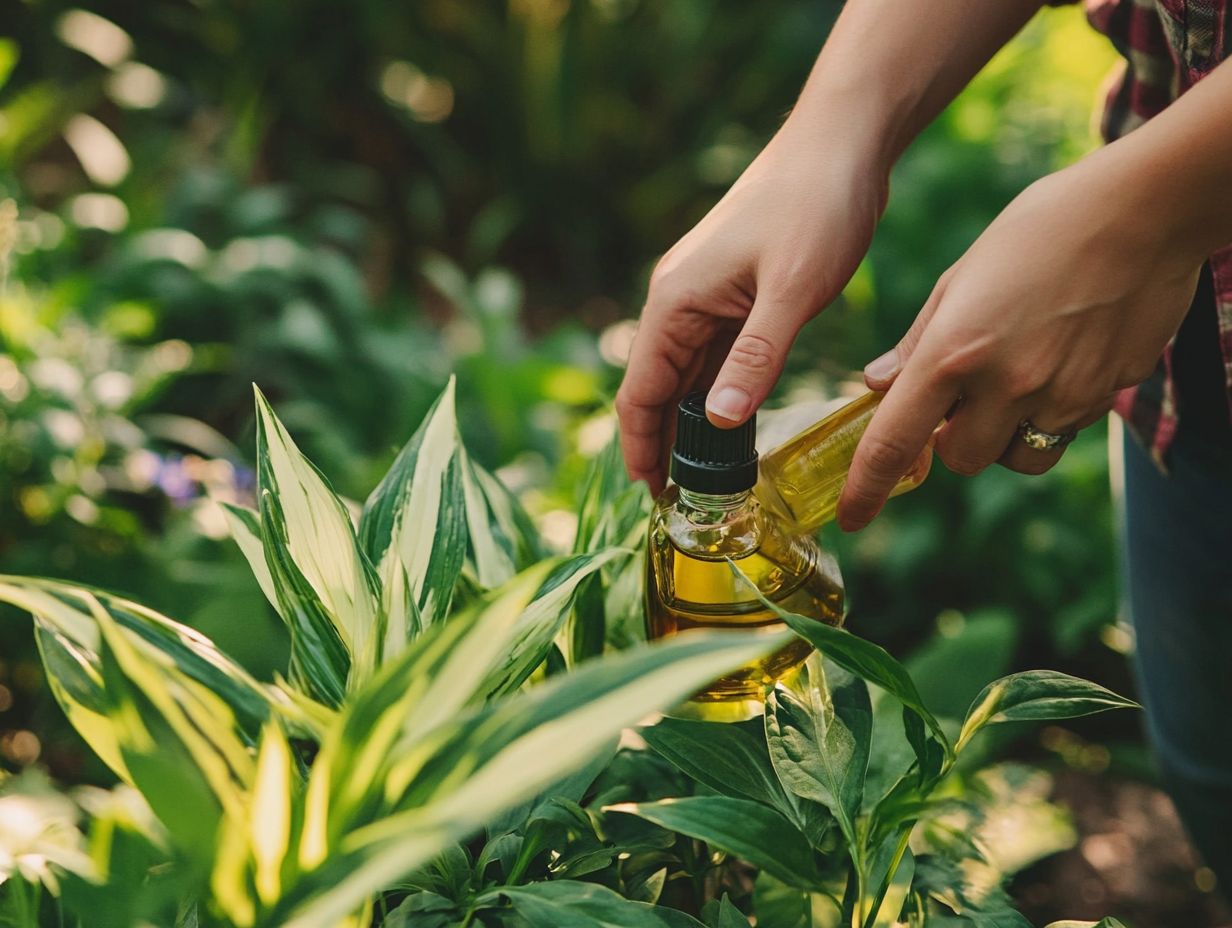
Creating your own homemade pest repellents and traps can effectively manage pest control for your indoor plants without relying on synthetic chemicals. Combine ingredients like diatomaceous earth and essential oils to develop powerful yet safe solutions.
With just a few straightforward steps, you can harness nature’s bounty to craft these eco-friendly remedies. Start by mixing water with a few drops of essential oils, such as peppermint or lavender, to create a potent spray that discourages unwanted insects.
If you prefer a hands-on approach, consider making sticky traps using paper coated in a mixture of sugar water and oil. These attract pests and ensnare them.
Another effective method involves dusting diatomaceous earth around your plants. This creates a barrier that inhibits crawling insects while keeping beneficial ones unharmed. These DIY pest control solutions are straightforward and offer peace of mind knowing that your approach is safe for both your plants and the environment.
Don t wait! Start using these remedies today to protect your plants.
Preventing Future Infestations
Preventing future infestations is essential for your success in plant care. This enables you to enjoy vibrant and healthy plants throughout the year.
By implementing effective pest management strategies like controlling water levels and ensuring your plants receive the right nutrients plants need you can greatly cut down the chances of pests making a comeback.
Maintenance and Care Tips
Understanding plant maintenance and care tips is vital for developing a thriving indoor garden. This also nurtures your green thumb and keeps your gardening experience enjoyable. Regular watering, providing the right light exposure, and paying attention to safety can enhance the vitality of your plants and boost their resilience against pests.
It s crucial to recognize the specific needs of each plant species. Different varieties thrive under unique conditions. For instance, some may love high humidity, while others prefer drier air.
Incorporating best practices like using natural fertilizers and ensuring proper how well soil drains can further elevate your plants’ health. Regularly checking for signs of distress like yellowing leaves or stunted growth lets you take timely action, promoting longevity and vitality.
Embracing these guidelines will help you cultivate not just stunning plants but also a flourishing ecosystem within your home, ensuring plant safety and plant health.
Frequently Asked Questions
What are common indoor plant pests and why should I manage them naturally?
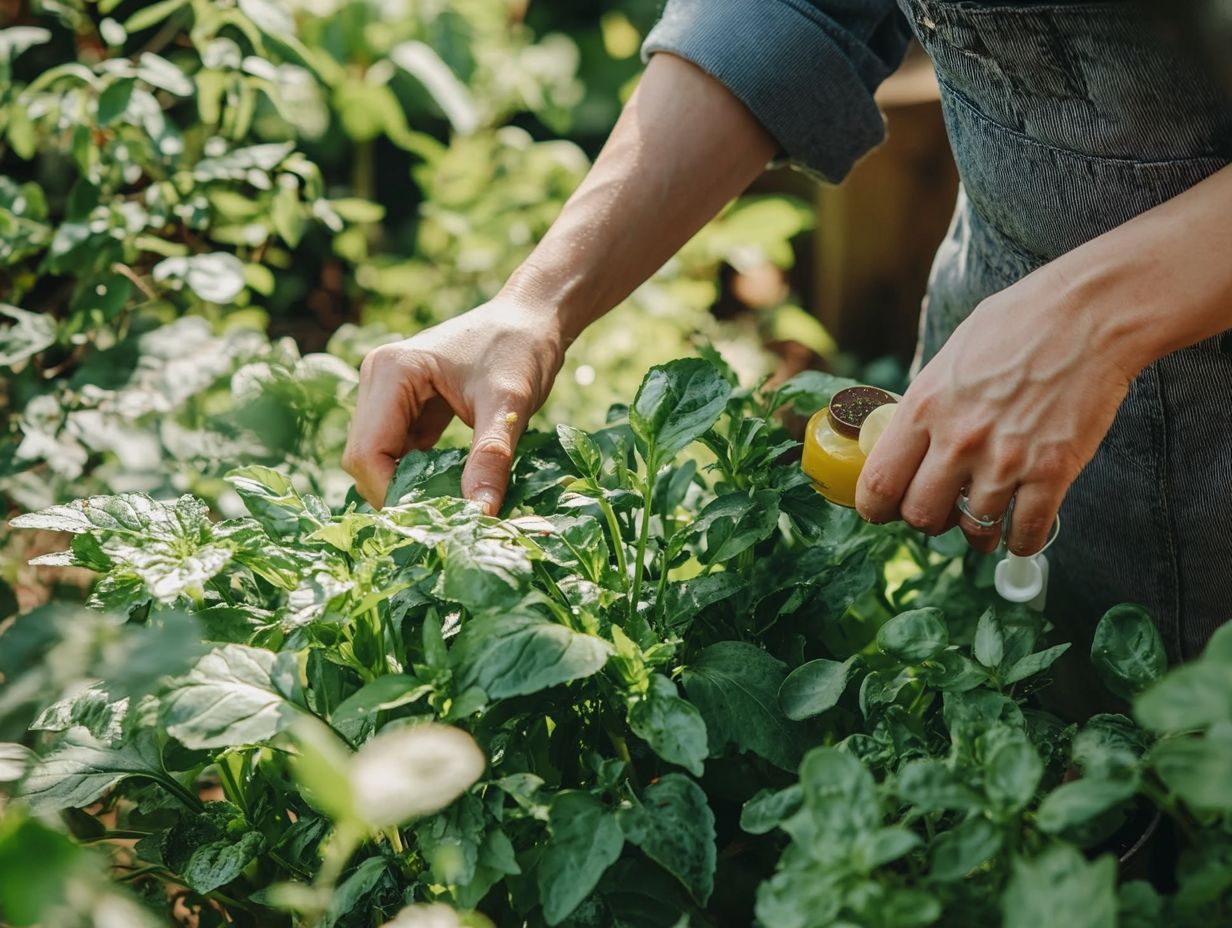
Aphids, fungus gnats, mealybugs, and spider mites are common pests. It s important to manage them naturally to avoid harming pets, children, and the environment.
What are some natural methods for managing indoor plant pests?
Some natural methods include:
- Spraying plants with a mixture of water and dish soap
- Using neem oil
- Introducing beneficial insects
- Regularly wiping down plant leaves with a damp cloth
How can I prevent indoor plant pests from infesting my plants?
To prevent indoor plant pests:
- Regularly check your plants for pests
- Keep them clean and well-maintained
- Avoid overwatering or overfertilizing, as this can attract pests
Are there any household items that can help manage indoor plant pests?
Yes, items like coffee grounds, garlic, and vinegar can repel pests. Placing these items around your plants or using them in a homemade spray can help deter pests.
What are the benefits of using natural methods for managing indoor plant pests?
Natural methods are safer for you, your pets, and the environment. They also do not harm beneficial insects and can be just as effective as chemical pesticides when used correctly.
What should I do if my indoor plants are already infested with pests?
If your plants are already infested, isolate the affected plants and treat them with natural methods or seek help from a professional. Avoid chemical pesticides, as they can harm both the environment and your plants.
Start implementing these tips today for healthier, happier plants!

